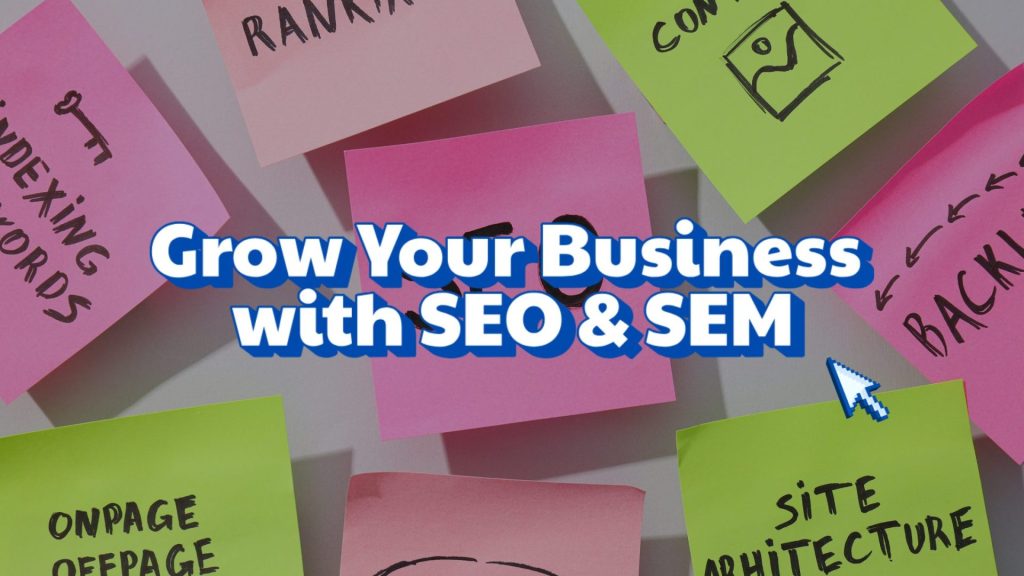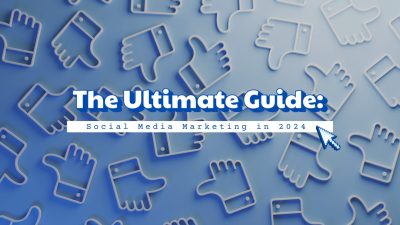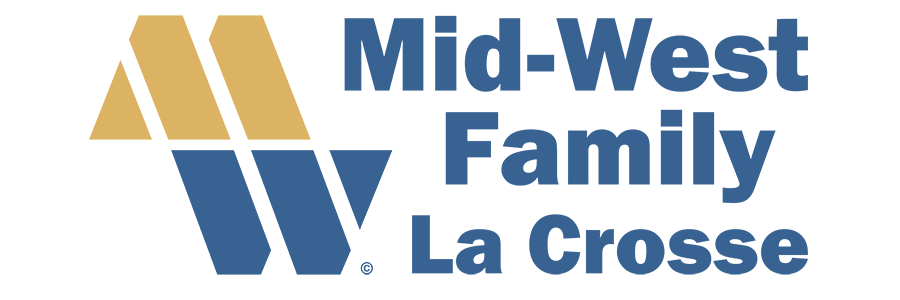If you want to reach online audiences, there are two core concepts that need to feature dominantly throughout all your online marketing efforts: SEM and SEO. While they sound similar, they encompass two distinct aspects of customer outreach:
- Search engine optimization: This incorporates all strategies your business uses to organically feature in search engine results pages (SERPs), such as keyword-based content creation, modernizing your website, etc.
- Search engine marketing: This is a paid advertising strategy for appearing higher in SERPs through options like sponsored ads.
Follow these steps to ensure both aspects are present throughout your marketing and advertising efforts.
1. Set Clear Goals
Because SEO and SEM are separate concepts, they should have separate goals. Set objectives for how much traffic you want to originate through SEM (PPC ads in search engines) and what goals you want to reach through your SEO efforts.
While the two areas might have the same goals, such as increasing website visits, generating more leads, or generating more sales, they should be evaluated separately.
2. Keyword Search
Both SEO and SEM center around keywords. For your SEM efforts, identify relatively high-value but proportionally low-cost keywords that your ads should align with. More specific long-tail keywords will get you fewer clicks, but those clicks will be a lower cost per click and the ad is much more targeted.
For SEO efforts, identify highly sought-after keywords in your niche and either create new content about these topics or refresh your existing content to focus on them.
3. On-Page Optimization
On-page optimization is primarily oriented toward SEO. If you want to organically rank high in SERPs, your content needs to clearly reflect the keywords and topics your audience is interested in.
You can make it more apparent to your audience—and to search engine bots crawling through the internet—by featuring those keywords in your titles, meta descriptions, and content (including sub-headers) without keyword stuffing.
4. Technical SEO
For both SEM and SEO to be effective, your site must work well and create a great user experience. This includes technical aspects like:
- Site speed
- Sitemap creation so your website is well-organized and navigable
- An up-to-date robots.txt file
- Regular efforts to catch and fix broken links
- Making sure your site is mobile-enabled so it can be navigated on any type of device
5. Content Marketing
Content marketing is important for both SEO and SEM efforts. You need to frequently create and publish engaging content that will rank highly in SERPs because users
genuinely find the content engaging and search engines also recognize its value for users.
You can also create content for SEM efforts, such as landing pages your sponsored ads will direct viewers to streamline conversion.
6. Link Building
High-quality backlinks are the bread and butter of SEO. When other websites link to your content, that tells both human and robot audiences that you’re a trusted authority in space. Your website’s domain authority gets higher, and you rank more visibility in SERPs.
However, it’s important that your backlinking strategies prioritize natural and relevant backlinks, so this approach should focus on creating link-worthy content.
7. Local SEO (If Applicable)
When you serve a local market (or multiple different small areas), an important subset of SEO is local SEO.
You can set up a business profile through Google My Business and local business directories such as Yelp or Angi to spread the word where local shoppers are likely to search.
8. Pay-Per-Click (PPC) Advertising
PPC ads are at the heart of SEM. Once you determine which keywords align with your brand and target audience, you can place sponsored ads that appear on SERPs.
Use short, compelling messages to get viewers to click on your ads, and then direct them to landing pages that tightly correspond to their search. PPC ads generate a lot of metrics you can use to fine-tune performance.
9. Display Advertising and Remarketing
Display advertising is another form of paid online marketing where more graphical ads for your business show up on web pages that your target market is likely to frequent.
While display ads reach a broad audience based on your demographic and customer profile data, you can also use remarketing and retarget strategies to create a follow-up touchpoint.
10. Analyze and Optimize
Each of these strategies should result in changed user or buyer behavior. Carefully conduct A/B tests as you employ different changes or watch the performance metrics for all your campaigns. Over time, you can use the data from Google Analytics, Google Search Console, and other sources to refine your campaigns, spend more money on what works, and make your marketing more efficient. Key metrics will include:
- Bounce rates
- Your movement in keyword rankings and SERPs
- Web traffic
- Conversion rates
11. Stay Updated and Adapt
Throughout your journey, remember that nothing is stagnant. The rules and best practices governing both SEM and SEO are always evolving, and you will want to adjust your approaches accordingly.
Start Powering Up Your Online Marketing Efforts with Strategic Support from Mid-West Family
At Mid-West Family, we always keep our finger on the pulse of SEM and SEO across major search engines and marketplaces.
Our team is here to help support your SEO, SEM, and business growth strategies. Reach out today for a strategy meeting or to learn more about our services.








